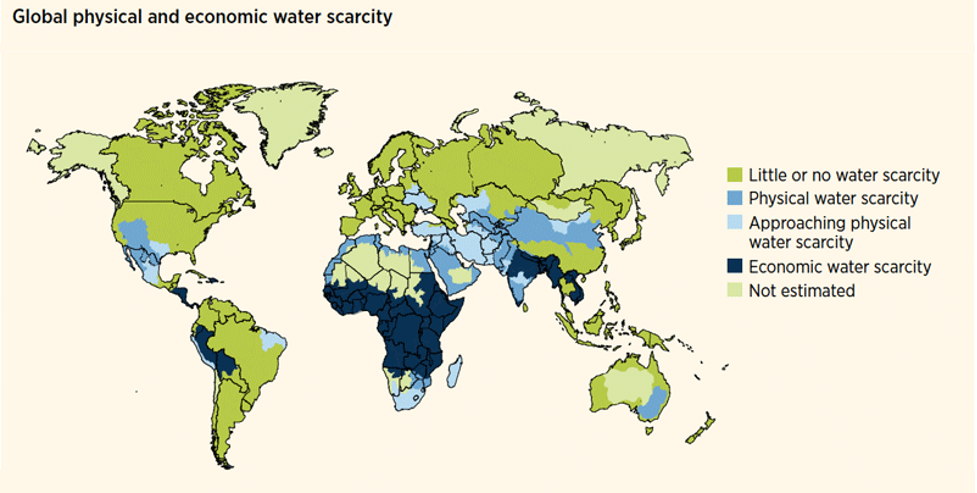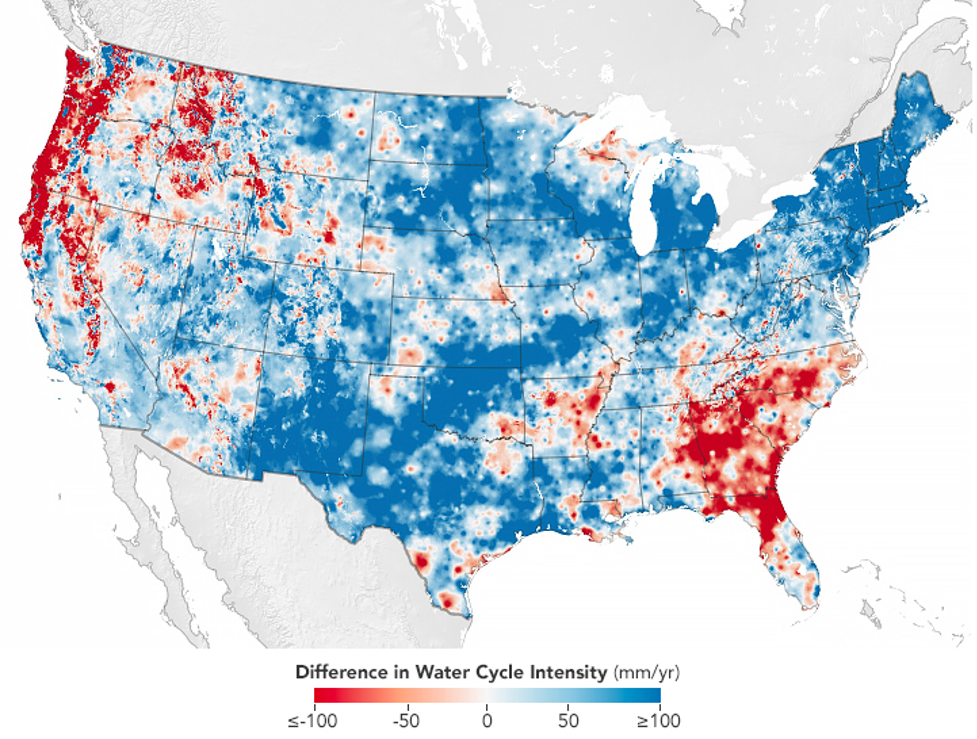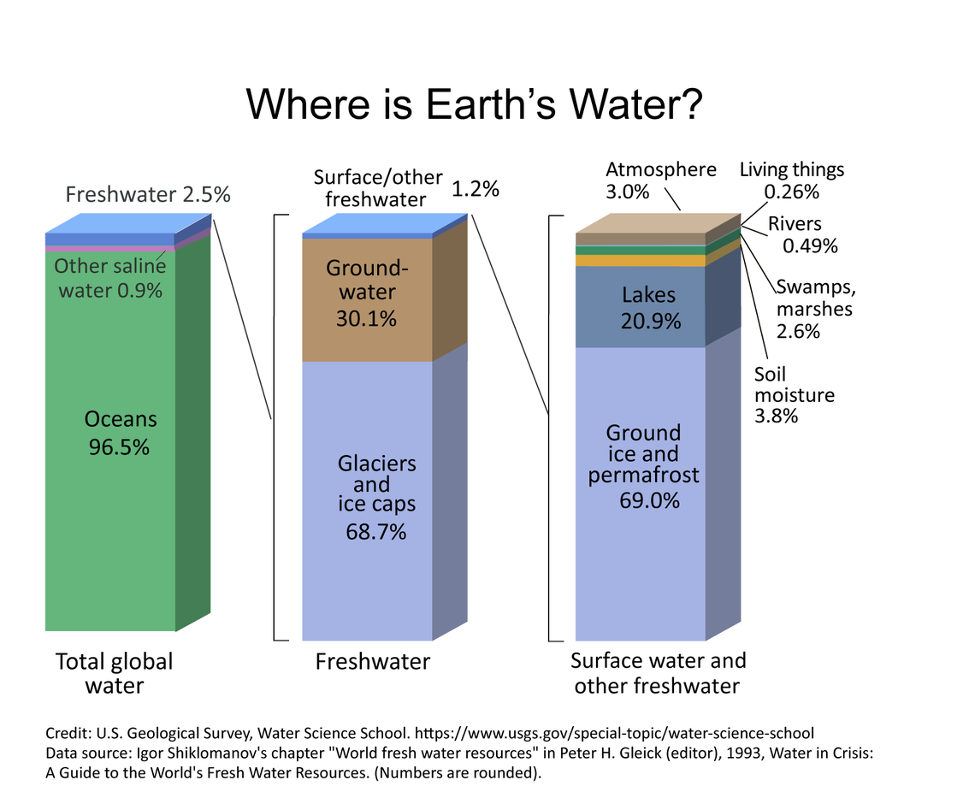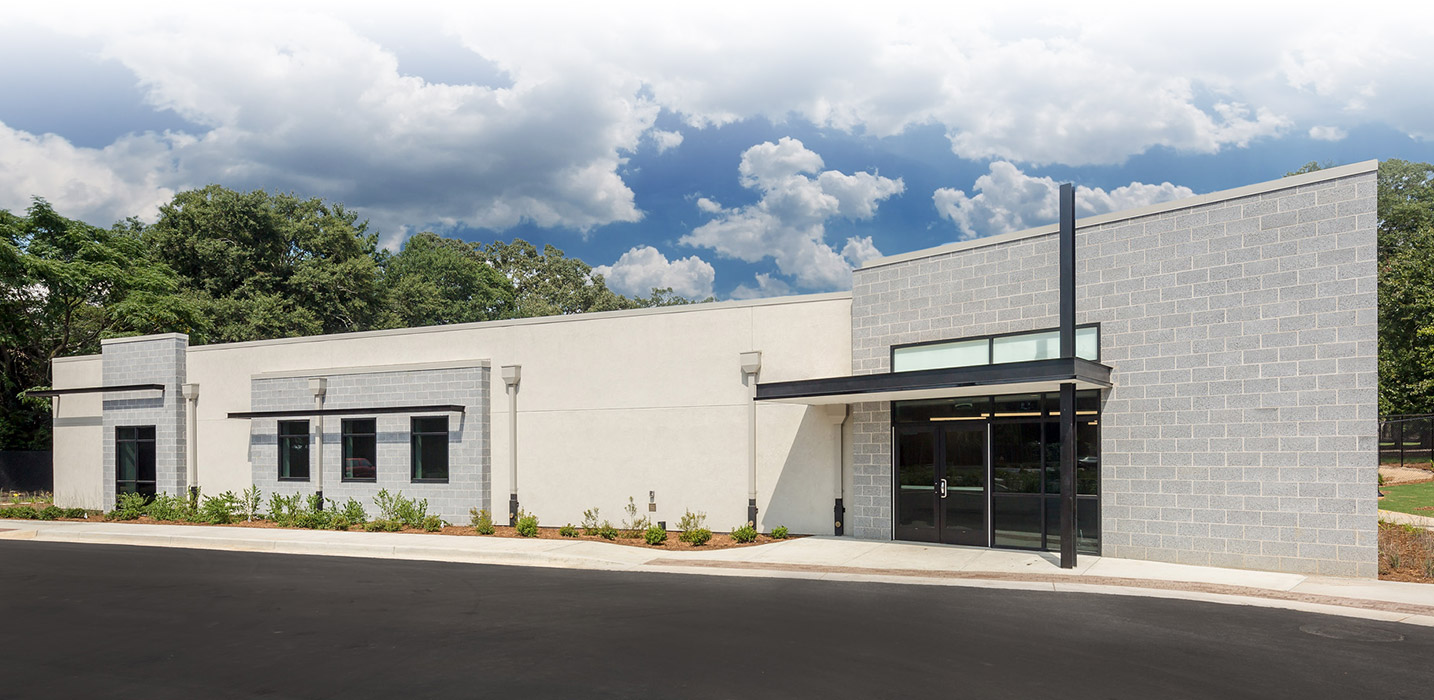World Water Day is about celebrating water and the many roles it plays in our households, cultures, health, environment and more. Yet, despite how crucial water is to our daily lives, changes in climate are posing threats to access around the world. Michelle Ritchie, a PhD candidate in geography and climate science and an assistant professor here at IDM, elaborates on some of these concerns:
How have changes in climate already begun to impact water insecurity?
Water security varies across the world and is considered largely dependent on access to fresh water, such as lakes, springs, and aquifers. To be considered ‘water secure’, an area needs physical and economic access to fresh water. So, a water secure area has a reliable source of fresh water and the capital and infrastructure to access this water. For example, the ‘global North’ faces much more physical water scarcity than it does economic water scarcity (figure 1). Conversely, much of the ‘global South’ faces economic water scarcity rather than physical water scarcity. Despite physical distance and differing water scarcities, this phenomenon highlights our complex global entanglements with water, and therefore with each other. For example, we—you and me—need to acknowledge and explore how our water use is entangled not only in what comes out of our hoses and faucets, but also in what we buy and use. Apparent or not, water is embedded in the production of all of our ‘things’, including the built environment. For example, it takes many hundreds of gallons of water to make a single cotton t-shirt. In this complex equation, climate change serves to highlight existing inequalities in the global supply and demand of fresh water. Disproportionate impacts across space and place requires us to work toward solution-building as a global community in support of a sustainable relationship with the global hydrologic system. Today, I challenge us to consider how we impact people in places that are physically distant from us through our relationship with water.

Your course “How to Survive the Apocalypse” addresses ways in which these issues can be mitigated and/or adapted to. What are our most pressing concerns regarding water, and the best ways to address them?
Less than 3% of the water on Earth is fresh water, of which less than 1% is available to us in the form of surface or groundwater (figure 3)! Most of our global groundwater sources are already being depleted past sustainable use. That is, how quickly and effectively the groundwater is replenished is superseded by how quickly the groundwater is removed. Concurrently, the global hydrological cycle is speeding up under the influence of climate change, which means surface water is being evaporated more readily and water is cycling through the system at a faster rate (figure 2), potentially impacting the amount and quality of water that is available for replenishment of local fresh water sources. As a global society and as individuals we need to be responsible caretakers of Earth’s freshwater systems, particularly as they will continue to face increasing stressors from climate change amid increasing global demand.
In “How to Survive the Apocalypse”, we explore these and other confronting and seemingly insurmountable topics. I want students to understand how issues like water insecurity are reproduced globally and experienced locally, particularly in the context of climate change. I also want students to engage with complex problems using perspectives that are solution-facing. For example, existing literature on the Ogalala Aquifer—the United States’ largest groundwater system—is ripe with evidence of overuse and the negative ramifications of this impact on people and ecosystems. Concerns regarding water are seemingly endless—and it can be hard to see a viable path forward when we are overwhelmed by the negative picture—but for every complex problem there are many solutions that draw from a wide, creative mix of strategies and entry points.


What are some resources we can all use to track our own ecological footprint?
I encourage everyone to use the templates and tools that are available to calculate their footprints! Ecological footprints translate consumption habits into the amount of land and water required to support demand, carbon footprints translate consumption habits into a total amount of greenhouse gasses required to support demand, and so on. Your results will vary for each calculator, so be sure to put in as much detail as you can. Your results may surprise you! How many Earths would we need if everyone had your ecological footprint?
I also encourage everyone to use these calculators as a starting point, not an end point. Now that you have measured your footprint, what about the results would you like to change? Pick one key area and make a specific and measurable goal, then monitor your use in this key area to serve as a baseline. Work toward your goal one step at a time, then check back in with yourself by calculating your footprint again. How will it change over time? You get to decide! Pose a little friendly competition by asking others to calculate their footprints, too! How do you compare to your friends and family?
Here are a few calculator tools to get you started:

